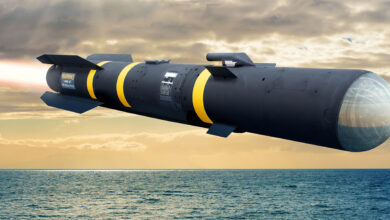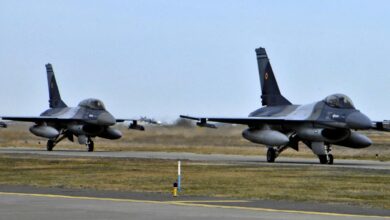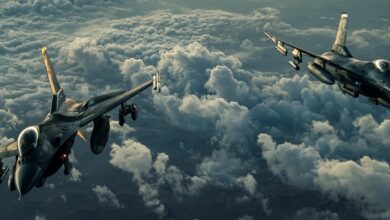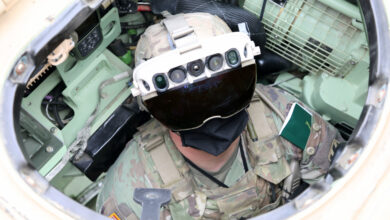
Israel is in a pickle. Hamas’ October 7 attacks left over 1,000 dead and hundreds were subsequently held hostage in Gaza Strip buildings. The barbarous practice of holding the hostages in hospitals and schools has apparently worked.
Deliberately using civilians as shields for fighters has been a tactic that has worked since the 1990s, and Western militaries have not come up with an effective counter.
In the future, the Israelis should consider the development of advanced non-lethal weapons — and so should we.
X Unit
Those of us who fought in Somalia in 1993 saw the first deliberate use of civilians to mask and protect armed gunmen. The movie Black Hawk Down effectively shows this tactic.
As the Marine Corps studied the lessons learned from the conflict, we determined that non-lethal weapons should be part of our tool kit. As the director of our newly-formed Experimental Unit (X Unit), one of my jobs was to explore the possibility of using such arms.
The task became more immediate when the UN asked for help in evacuating the remaining UN forces from the failed mission in Somalia. General Tony Zinni (then a Lieutenant General) was tasked with using his First Marine Expeditionary Force staff as the nucleus of the Joint Task Force designated to accomplish the evacuation.
As a veteran of the first Somali incursion, Zinni asked the X-Unit to look into using some developmental experimental systems. This led me on a coast-to-coast search of government labs to see what was available.
If I found something the general deemed interesting, he would send a Marine Corps transport aircraft to the lab to pick it up, to include whatever scientist who knew how it worked.
If the system seemed potentially useful, we did cultural war games to determine how the Somalis might react. Zinni picked a few of the systems and trained his troops on them.
None of the selected systems were particularly decisive, but he made excellent use of psychological warfare in BBC radio interviews, which the Somalis avidly followed, portraying them as exotic and potentially very dangerous.
The ploy worked and Somali crowds and gunmen were much more reluctant to interfere with the subsequent evacuation. This contributed to the relatively bloodless success of what came to be known as Operation United Shield.

Non-Lethal Weapon Development
After Somalia, the Marine Corps lobbied for more effective non-lethal weapons. Congress eventually funded a Joint Non-Lethal Weapons Directorate (JNLWD) at Quantico, Virginia.
The JLNWD developed a directed energy weapon, the Active Denial System (ADS), which is designed to keep crowds away from US troops by making them feel searing heat without actually harming them.
If you stay behind a clearly designated line, the system will not be used. Those who cross the line will suffer the consequences. The rest should get the picture. ADS has never been used militarily because the wars in Afghanistan and Iraq did not require its use.
However, those of us in the X-Unit continued to work on using non-lethal weapons to clear buildings in urban combat where fighters and civilians were intermixed. We thought we found a technology in ultrasound, but it was omni directional; this would require us to deliver it to the target location by a robot.
The project was given impetus when UN peacekeepers in former the Yugoslavia were taken hostage by insurgents in a mountain ski chalet in Sarajevo. We tested candidate robots at the ski resort of Whiteface Mountain in the Adirondacks (site of the 1980 Winter Olympics). While we found an acceptable robot, unfortunately the ultrasound non-lethal device proved to be insufficient.
Animal testing showed that it merely irritated rather than incapacitated the monkeys. We deemed it unsatisfactory for military or law enforcement use. This appears to be the technology that the Russians are using to harass US diplomats and intelligence officials.
Future Combat
In actuality, there is a potential technology that can cause fighters and non-combatants to be incapacitated in buildings so that armed fighters can be sorted out.
It is a variation on the ADS system that can cause the immediate incapacitating effect of heat prostration. The technology’s current state requires the power source to be carried on a tractor-trailer sized platform, but reducing it is a mere technical challenge.
There may be an eventual truce in Gaza, but it will not last forever. In addition, we Americans will likely face similar urban warfare problems in the future. We could help the Israelis and ourselves by developing non-lethal weapons.
 Gary Anderson served as the Chief of Plans (G-5) of the Marine Corps Expeditionary Force responsible for the Indo-Pacific area. He was the Director of the X Unit, which evolved into the Marine Corps Warfighting Lab. When he retired, he was the Lab’s Chief of Staff.
Gary Anderson served as the Chief of Plans (G-5) of the Marine Corps Expeditionary Force responsible for the Indo-Pacific area. He was the Director of the X Unit, which evolved into the Marine Corps Warfighting Lab. When he retired, he was the Lab’s Chief of Staff.
He lectures on Alternative Analysis at the George Washington University’s Elliott School of International Affairs.
The views and opinions expressed here are those of the author and do not necessarily reflect the editorial position of The Defense Post.
The Defense Post aims to publish a wide range of high-quality opinion and analysis from a diverse array of people – do you want to send us yours? Click here to submit an op-ed.











